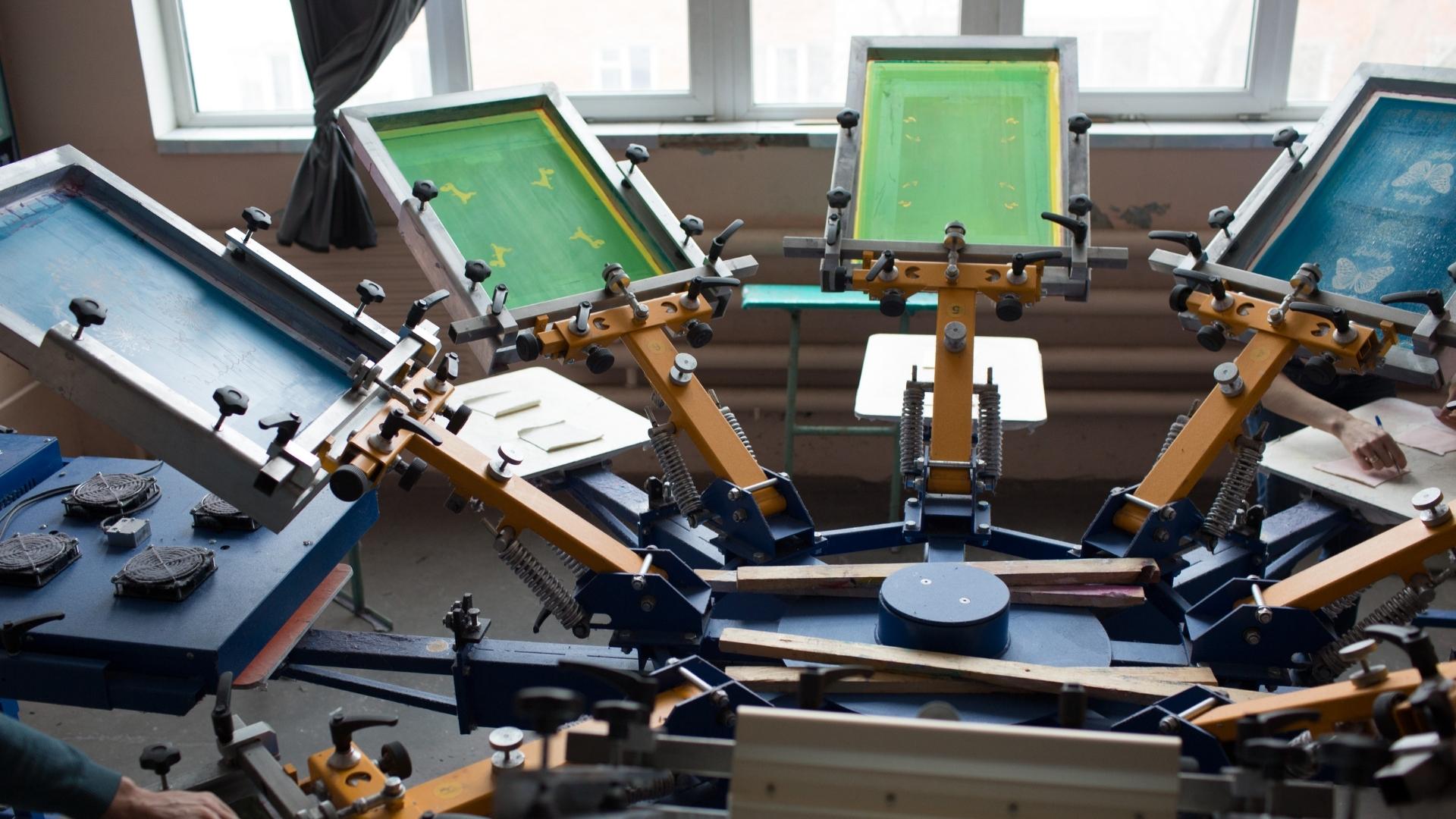ChatGPT said: How 10:9 Design Texas is leading the screen printing industry
The Vital Guide to Comprehending Screen Printing and Its Versatile Utilizes
Screen printing has a rich history that dates back to old times, evolving into a sophisticated technique used throughout numerous sectors today. This overview discovers the details of the screen printing procedure, describing its applications in fashion, home, and advertising décor - 10:9 Design reviews. Recognizing these principles can open up imaginative capacity for both artistic and business tasks. The adhering to areas will expose crucial suggestions and techniques to boost one's screen printing ventures
The History of Screen Printing
Screen printing has origins that map back centuries, its advancement shows the imaginative and technological developments of different cultures. Coming from in ancient China, the method was at first utilized for embellishing textiles and later spread to Japan, where it became indispensable to Ukiyo-e woodblock printing. The method changed to Europe in the 18th century, where it gained appeal amongst artisans and industrial printers. The invention of picture solution in the 20th century transformed screen printing, enabling more elaborate layouts and greater effectiveness. Musicians like Andy Warhol further pushed its appeal, using the medium to produce legendary works that mixed commercialism and great art. By the late 20th century, screen printing had established itself as a flexible strategy, employed in vogue, advertising and marketing, and art. Today, it remains to progress, integrating electronic technology and increasing its applications throughout various sectors.
The Screen Printing Process Explained
Screen printing transforms imaginative visions right into substantial designs through a series of accurate steps. At first, a photo is developed and afterwards moved onto a screen, generally made from great mesh material extended over a framework. A light-sensitive solution is used to the screen, which is exposed to light, hardening in locations not covered by the image. After rinsing the unhardened emulsion, a stencil is developed.
Next off, the screen is positioned over the substrate, whether it be fabric, paper, or one more material. Ink is then pushed through the open locations of the pattern making use of a squeegee, transferring the design onto the substrate below. This process can be duplicated for multiple shades, requiring separate screens for each shade. Lastly, the printed item is cured using warm to assure the ink sticks correctly, causing a durable, dynamic design on-line.
Kinds Of Screen Printing Techniques

Furthermore, specialized strategies, such as discharge screen printing, get rid of color from the textile to create softer prints, while aluminum foil screen printing uses metal aluminum foil to achieve a shiny finish (10:9 Design reviews). Each strategy offers distinct characteristics, catering to various creative needs and production scales, ultimately expanding the possibilities within the screen printing domain
Applications of Screen Printing in Various Industries

Furthermore, the signage and advertising sectors make use of screen printing for developing attractive displays and banners. This method permits vibrant colors and intricate designs that record interest. In electronic devices, screen printing is utilized for applying conductive inks to circuit card, crucial for component connections. The home decoration sector welcomes screen printing to produce distinct layouts on textiles and wall surface art. Overall, screen printing functions as a critical device throughout varied areas, boosting items with individualized and aesthetically attractive graphics.
Tips for Effective Screen Printing Projects
While undertaking a screen printing job, careful focus to detail can considerably boost the final result. Choosing top quality materials is important; this consists of the screen, inks, and substratums. Using proper mesh matters can affect ink deposition and detail resolution. Preparation is just as important; extensive cleansing of screens and appropriate direct exposure times guarantee crisp prints.
Next off, accurate registration is essential for multi-color prints. Making use of alignment tools can aid achieve exact layering. In addition, testing prints on scrap materials before manufacturing aids identify possible issues without squandering resources.

Often Asked Questions
What Products Are Best for Screen Printing on Textile?
Cotton and polyester blends are suitable for screen printing on material due to their toughness and ink absorption. Furthermore, specialized fabrics like silk or canvas can generate unique structures and finishes, improving the total design high quality.
Just how Do I Tidy and Maintain Screen Printing Devices?
To preserve and clean up screen printing equipment, one ought to regularly clean screens with appropriate solvents, examine mops for wear, lubricate relocating components, and shop all things in a dry, dust-free atmosphere to prolong their life expectancy.
What Are the Environmental Effects of Screen Printing?
Screen printing can have considerable ecological influences, consisting of chemical waste from solvents and inks, water use during cleaning processes, and power usage. Lasting techniques and green products are necessary for lessening these negative impacts.
Can Screen Printing Be Done at Home Effectively?
Screen printing can be properly done at home with the ideal materials and strategies. Enthusiasts can create high quality prints, though success relies on their ability level, tools, and understanding of the process involved.
What Are the Prices Related To Starting a Screen Printing Service?

Starting a screen printing company involves prices for tools, materials, and office. First expenditures normally vary from a few hundred to a number of thousand dollars, relying on the range, top quality of machinery, and wanted manufacturing capability.
Screen printing has a rich background that dates back to printable caution signs old times, evolving right into a sophisticated method made use of across different industries today. Another method, rotating screen printing, uses cylindrical displays, promoting constant printing on material rolls, therefore improving effectiveness for massive manufacturings. In addition, specialized techniques, such as discharge screen printing, get rid of color from the textile to create softer prints, while aluminum foil screen printing uses metallic foil to achieve a shiny coating. In the fashion sector, screen printing is widely used to produce lively designs on garments, enabling brand names to showcase their distinct styles. Cotton and polyester blends are optimal for screen printing on fabric due to their durability and ink absorption.